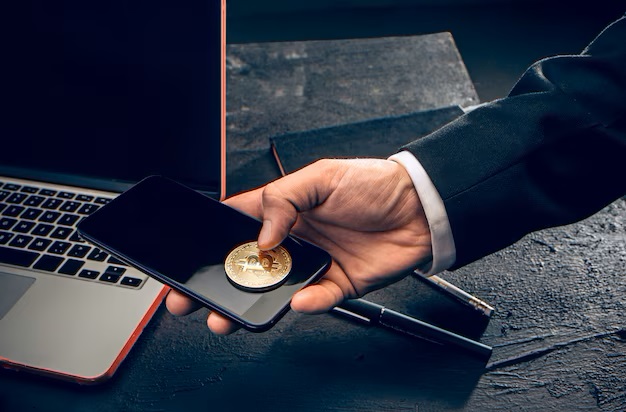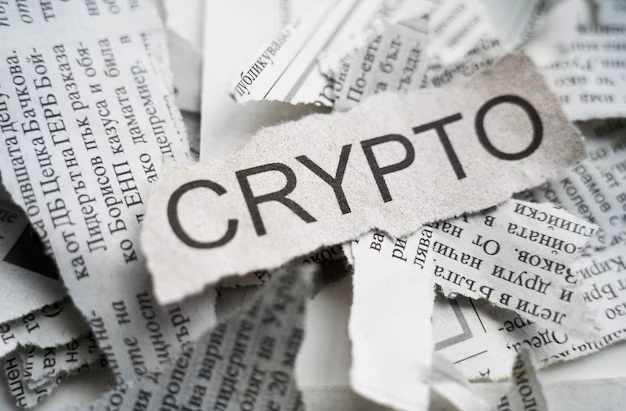Locate the nearest machine using dedicated mobile applications or websites that provide real-time maps. These tools often show operational status and fees associated with transactions, ensuring that you find a convenient option.
Before proceeding, ensure your wallet is properly set up. This may involve downloading a mobile wallet application that allows you to store and manage your cryptocurrency securely. Preparing your wallet beforehand will streamline the entire process.
Check the requirements specific to the machine. Some kiosks may necessitate phone number verification via text message, while others have varying limits on purchase amounts. Familiarizing yourself with these details prevents any unwelcome surprises during your visit.
Bring cash or a payment method accepted by the selected kiosk. Different machines support different fiat currencies, so it’s wise to verify beforehand. Keeping small denominations handy can also facilitate smoother transactions.
Finally, always review the transaction fees prior to confirming your purchase. Understanding the cost involved helps maintain transparency, enabling you to make informed choices and avoid unexpected charges.
Finding the Nearest Bitcoin ATM
To locate a nearby machine, utilize mapping services like Google Maps. Simply enter phrases such as “cryptocurrency kiosk” or “cash exchange point.” The platform will display options based on your current location.
Alternatively, apps specifically designed for identifying these machines can be downloaded on both Android and iOS devices. These applications often provide real-time information on distances, fees, and availability.
Websites dedicated to tracking these kiosks usually feature interactive maps. They provide user-contributed updates on operational status and the range of services available at each location.
Local cryptocurrency communities or forums can offer insights and recommendations about the most reliable facilities in your area. Engaging with fellow users can be beneficial for gathering tips on less-known yet convenient options.
Setting up alerts from mobile applications ensures you receive notifications about new installations or changes, enhancing your experience in accessing these services.
Understanding Bitcoin ATM Fees
The fee structure for kiosks varies widely, typically ranging from 5% to 20% of the transaction amount. Always review the displayed fee before proceeding with any transaction. It’s important to recognize that these fees can fluctuate based on market conditions and the specific machine’s operator.
Transaction Types and Their Costs
Buying coins usually incurs a higher fee compared to cashing out. Expect to pay around 7% to 15% when purchasing cryptocurrencies, while selling may come with a fee of 5% to 10%. Some locations offer specific promotional rates, so check local listings to find the best options.
Additional Charges and Considerations
Be aware that some machines may impose additional charges for specific payment methods, such as credit or debit cards. Always check the payment screen for a detailed fee breakdown. Additionally, consider the withdrawal limits, as exceeding them may alter the fee structure applied per transaction.
Steps to Purchase Bitcoin at an ATM
Locate a nearby machine using an online map or a dedicated app to find convenient locations.
- Ensure you have a supported wallet application on your smartphone or a hardware wallet ready to receive funds.
- Approach the terminal and select the option for purchasing cryptocurrency.
- Enter the amount you wish to acquire. Be aware of transaction fees that may apply.
- Scan your wallet QR code or manually input your wallet address. Double-check for accuracy to avoid losing funds.
- Insert cash into the machine. Some devices may accept debit or credit cards–confirm this feature if needed.
- Review the transaction details displayed on the screen. Confirm the amount and address before proceeding.
- Complete the purchase by following on-screen instructions. Obtain your receipt for reference.
- Check your wallet shortly after the transaction to confirm receipt of funds.
Always ensure the machine is legitimate to avoid potential scams or malfunctions. Keep your wallet information secure and private.
How to Withdraw Cash Using a Bitcoin ATM
Locate a machine that supports cash withdrawals. Use a map service or a website to find the nearest terminal. Verify the fees associated with transactions prior to proceeding.
Required Steps
- Approach the terminal and select the option for cash withdrawal.
- Input the amount you wish to withdraw and confirm your selection.
- Scan your mobile wallet’s QR code, ensuring it contains the appropriate amount of cryptocurrency.
- Complete any authentication steps as prompted, such as entering your phone number for SMS verification.
- Follow prompts to finalize the transaction.
Tips for Smooth Transactions
- Ensure your cryptocurrency balance is sufficient for the desired withdrawal.
- Keep your mobile device nearby and charged for scanning QR codes.
- Review transaction fees beforehand; they can vary widely between machines.
- Withdraw during business hours if you encounter issues; staff can often assist.
Trustworthy terminals will dispense cash immediately after completing all steps. Always double-check the received amount before leaving.
Ensuring Your Transaction Security
Use a hardware wallet for added safety when executing transactions. These devices keep your private keys offline, reducing the risk of hacks.
Enable 2FA (Two-Factor Authentication) on any services linked to your wallet. This adds an extra layer of protection against unauthorized access.
Before initiating a transfer, double-check the receiving address. A minor error can result in a permanent loss of funds. Scanning QR codes can help prevent mistakes.
Keep your software up to date. Regular updates can patch vulnerabilities that may be exploited by malicious actors.
Be cautious of phishing attempts. Always verify the URL of the service you are using and avoid clicking on links in unsolicited emails.
Consider conducting small test transactions before making larger transfers. This approach can confirm the function of the systems in place and your own process.
Set a difficult-to-guess password for your accounts. A combination of upper and lowercase letters, numbers, and symbols makes it challenging to crack.
Review transaction limits and fees before proceeding. Some platforms may have unexpected charges or caps that could affect your plans.
Inform yourself about potential scams and common fraudulent practices. Knowledge is a powerful tool in maintaining safety.
Stay anonymous when possible. Use a VPN while accessing your wallets to hide your IP address and encrypt your connection.
| Security Measure | Description |
|---|---|
| Hardware Wallet | Keeps private keys offline for enhanced safety. |
| Two-Factor Authentication | Adds an extra verification step for logins. |
| Confirm Receiving Address | Avert errors by double-checking the address. |
| Software Updates | Patches vulnerabilities to protect against hacks. |
| Phishing Awareness | Pay attention to URLs and avoid suspicious links. |
| Test Transactions | Check transaction functionality with small amounts. |
| Strong Passwords | Use complex passwords to secure accounts. |
| Know Common Scams | Staying informed can reduce risk of fraud. |
| Maintain Anonymity | Utilize a VPN to secure your internet connection. |
Troubleshooting Common Bitcoin ATM Issues
Check the network connection first. A weak or unstable internet signal can hinder the operation. Ensure the machine is connected by observing its display for connectivity status.
If the device fails to read your wallet QR code, clean the screen with a soft cloth. Ensure there are no smudges or reflections obstructing the scan. Alternatively, try entering your wallet address manually.
For withdrawal errors, verify your account balance. Insufficient funds will prevent transaction completion. Additionally, confirm that you have the correct cryptocurrency selected for the operation.
If the transaction is stuck, wait for a few minutes as it may still be processing. Monitor your blockchain wallet for any updates. If the issue persists, consider reporting it to customer support for assistance.
In case of limits reached, know the maximum transaction amounts set by the machine. Attempting a transaction exceeding the allowed limit will result in failure. Always check the terminal’s posted limits before initiating a transfer.
For error messages, refer to the user manual or on-screen instructions. Each error code typically has a defined solution that can rectify your issue quickly.
If you encounter a software glitch, reboot the machine. Sometimes, a simple reset can resolve unexpected malfunctions. If that fails, seeking help from on-site personnel could be necessary.
In situations of cash jams, do not try to retrieve the stuck cash yourself. Always wait for assistance from an attendant to avoid damaging the equipment.
Q&A: Easy guide to bitcoin atms
How does a bitcoin atm work, and why do bitcoin atms allow users to buy or sell bitcoin using cash without relying on traditional atms?
A Bitcoin atm is a simple teller machine connected to the blockchain that scans your bitcoin wallet QR code, lets you insert cash into the atm, and then sends or receives bitcoin; unlike traditional atms, bitcoin atms offer a convenient way to buy or sell bitcoin without bank accounts.
What step-by-step guide should a newcomer follow if they need to use a bitcoin atm for the first time to buy btc with cash?
First find a bitcoin atm near you on Coin ATM Radar, choose buy bitcoin using cash, scan your wallet address, insert the desired amount of bitcoin in bills, and confirm the bitcoin transaction; the machine then sends bitcoin to your wallet almost instantly.
How do bitcoin atms require identity verification, and what forms of ID might the bitcoin atm operator request depending on the machine?
Many bitcoin atms require a phone number or ID scan once the amount of bitcoin exceeds set limits; the atm operator programs these compliance checks, so be ready to verify if you plan to buy or sell large amounts.
Why do bitcoin atms charge higher fees than a crypto exchange, and how can users reduce costs when they buy and sell bitcoin?
Bitcoin atms make blockchain access easy but atms charge a premium service fee; buying smaller amounts or using off-peak hours, when network congestion is low, can trim the total cost of the bitcoin transaction.
How can users find a bitcoin atm near them and confirm whether atms support selling bitcoin for cash as well as buying?
Sites like Coin ATM Radar list bitcoin atm locations worldwide and label whether the machines support selling bitcoin using the “sell bitcoin” filter, ensuring you locate a teller machine that fits your purpose.
What security measures ensure bitcoin atms safe for everyday use, and how does cutting-edge encryption technology protect each bitcoin wallet address?
Bitcoin atms use cutting-edge encryption technology plus secure network tunnels, so when you send bitcoin or receive bitcoin the data stays encrypted, preventing interception while funds move across blockchain networks.
How do users transfer funds from their bitcoin wallet to cash from a bitcoin atm, and what happens if they accidentally enter the wrong address?
When you sell bitcoin for cash, the bitcoin atm generates a one-time wallet address that belongs to the machine; after confirmation, it dispenses fiat. Sending to a wrong address would still settle on-chain, so always double-check before pressing send bitcoin.
Why do many bitcoin atms support other cryptocurrencies, and what does that mean for people who want to buy bitcoin and other cryptocurrencies in one visit?
Depending on the bitcoin atm, the interface may include options for ethereum, stablecoins, or meme tokens, letting users to buy and sell bitcoin and other cryptocurrencies in one seamless session.
What should you know about transaction limits and volatility before you buy or sell bitcoin without a bank through a bitcoin teller machine?
Bitcoin prices can swing quickly, and atms often set daily caps; decide the amount of bitcoin you want beforehand, check real-time quotes on the screen, and confirm you can handle short-term price moves.
How do bitcoin atms function similarly to traditional atms yet still centralize certain services through a single atm operator?
Traditional atms dispense banknotes on command, while bitcoin atms provide digital asset conversion; both rely on one operator for maintenance and compliance, making it easy to buy or sell bitcoin using familiar kiosk workflows while keeping ownership in your secure wallet.






